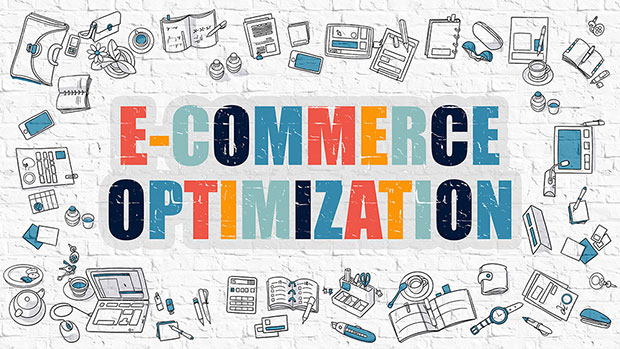In this uncertain and increasingly homebound era, customers are turning online for everything from groceries to cat food. It’s more important than ever to make sure that websites are optimized for the highest-possible customer engagement and conversion. E-commerce optimization is one game that companies struggling for market share in the midst of a pandemic must play.
Optimization is “analysis and correction of e-commerce marketing, workflow and systems to enhance the efficiency and value of an e-commerce brand,” said Travis Romine, an e-commerce growth consultant at Sharp Commerce.
Optimization ultimately comes down to design — and good design, it turns out, is good business.
“The key elements of e-commerce optimization are ease of use, customer journey mapping, speed of the site, and relevant content,” observed Jim Barnes, CEO of enVista.
“The key to e-commerce optimization is understanding the complete customer journey. The journey doesn’t stop when customers place their order and provide payment,” he told the E-Commerce Times.
“Optimizing e-commerce entails the entire end-to-end process,” said Barnes, “as the customer journey starts — with product look-up and research — and continues, through product delivery and in some cases returns.”
Simply put, e-commerce optimization is “getting the most value from each visitor to your digital properties,” said Brian Massey, founder of Conversion Sciences.
Optimal Functioning
E-commerce optimization is not one thing, but rather a series of steps that can be taken to facilitate, improve and streamline customer experience.
“The definition of e-commerce optimization depends upon what you are focused on optimizing,” said enVista’s Barnes.
“From a customer perspective, optimization means a seamless, frictionless and enjoyable journey — from order placement to delivery and through returns,” he continued. “Optimizing the customer experience depends on the retailer effectively managing pre-cart and post-cart expectations by providing the customer with expected delivery dates, and tracking the parcel to provide near real-time mobile-friendly updates.”
The other end of the purchasing journey — returns — also needs to be considered when optimizing the e-commerce experience.
“The returns process needs to be flexible and self-service,” said Barnes. “Customers should have the ability to easily return items from the original order, adding reason codes, swapping items that did not fit, adding new items, and using a carrier-compliant label to ship the returns.”
Finally, a site needs to be fast and easy to navigate, so that customers don’t think twice before hitting the purchase button.
“It’s about speed and convenience,” said Barnes. “It is imperative for retailers to maintain a fast and responsive e-commerce site with a wealth of information to enhance the customer experience. E-commerce optimization is about making the customer a promise and keeping that promise end to end.”
How to Optimize
Optimizing a website involves looking at what you have, what you want to do, and who you want to reach. The more a company can use data to shape its optimization strategy, the better. It’s not a quick process, but it’s worth it in the long run.
The first step in optimizing a step involves looking closely at the current data about a site’s visitors and conversions.
“Analyze the data you have to come up with hypotheses for improving e-commerce,” Conversion Sciences’ Massey told the E-Commerce Times. “Research these ideas using behavioral data, analytics and user testing. This will help determine which ideas to turn into hypotheses for testing.”
The next step is to test the hypotheses to see if they improve revenue.
“Design tests that prove or disprove that your ideas will improve revenue,” said Massey. “You will be surprised at how non-rational your e-commerce buyers are.”
The final stage in the optimization process is applying what’s learned.
“Use what you learned from the test to create new ideas, or move on to the next idea on your list,” said Massey.
This kind of careful, data-based approach is the way to move forward into a fully optimized future, and away from older strategies for website design and implementation.
“The way we design websites is antiquated, Massey observed. “A small team of designers, developers and executives decide what they think their visitors want. These small teams are often very wrong. Working optimization processes into the website design process will fundamentally change the way websites are developed.”
Optimizing a Brand
Ultimately, optimization needs to have a broad reach.
“Optimizing a website is only one element of optimizing an e-commerce brand,” Sharp Commerce’s Romine told the E-Commerce Times.
“Typically the goal is to increase engagement and conversion, narrowing down the moving parts as you go, using A/B testing methods and keeping careful notes,” he added. “Google Analytics has a great annotation feature that’s helpful for this. Knowing which elements of the site to optimize first is super-important, so time is focused for meaningful wins.”
As technology evolves, it will alter optimization processes.
“New technology is coming fast with recommendation engines like 4-tell.com,” noted Romine. “Using AI technology to improve search, recommendation, and the customer experience can have a huge impact on engagement, sales and retention. Optimizing each slice of the customer journey is paramount to be competitive in today’s e-commerce marketplace.”
Whatever form it takes, e-commerce optimization is about increasing sales. It means finding customers, engaging them, and guiding them to a purchase.
“Each business has unique challenges,” said Massey.
“An e-commerce site with a low conversion rate on smartphones may choose to focus on getting email addresses. This allows them to market to visitors when they are on a desktop,” he pointed out.
“We had a client whose website didn’t support smartphones. By collecting emails, we were able to target visitors when they were on their laptop or work computer,” Massey recalled.
“Some of our e-commerce clients will take incoming phone calls. There is a phone app in all smartphones. So, we may optimize for calls on mobile devices,” he said. “Ultimately, optimization means engaging visitors in any way we can, and beginning a conversation with those who aren’t ready to buy.”
























































Social Media
See all Social Media